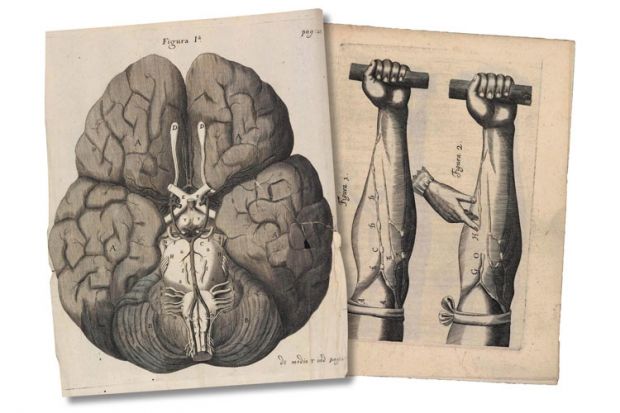Source: Bodleian Libraries, University of Oxford
The other, by Sir Christopher Wren, depicts the so-called “Circle of Willis”, the arterial supply of blood to the brain, and appears in Thomas Willis’ Cerebri Anatome (1664).
Both are on display as part of an exhibition at the University of Oxford’s Bodleian Library, Great Medical Discoveries: 800 Years of Oxford Innovation (until 18 May).
The exhibition brings together original manuscripts, including prescriptions, letters and laboratory notebooks, with rare books and artefacts to tell the story of Oxford’s contribution to medical science from the Middle Ages until today.
Other notable items include the first description of a cell in Robert Hooke’s Micrographia (1665); Dorothy Hodgkin’s proof of the molecular structure of penicillin during the Second World War; the apparatus used by John Gurdon to replace the nucleus of a cell in the 1960s; and a prototype pair of self-adjustable glasses for myopic teenagers in the developing world.
Send suggestions for this series on the treasures, oddities and curiosities owned by universities across the world to matthew.reisz@tsleducation.com
Register to continue
Why register?
- Registration is free and only takes a moment
- Once registered, you can read 3 articles a month
- Sign up for our newsletter
Subscribe
Or subscribe for unlimited access to:
- Unlimited access to news, views, insights & reviews
- Digital editions
- Digital access to THE’s university and college rankings analysis
Already registered or a current subscriber? Login

